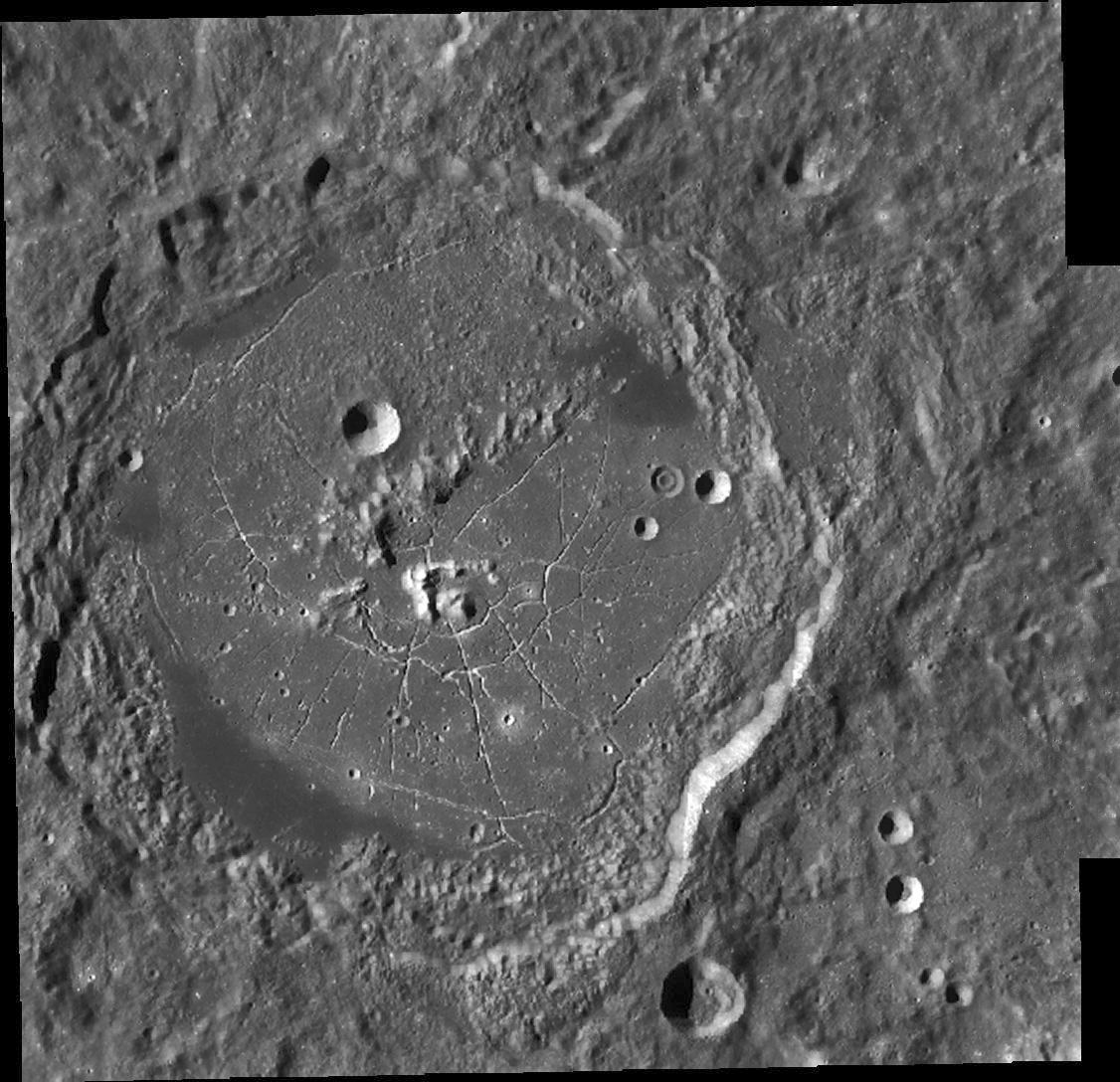Difference between revisions of "February 16, 2011"
(Created page with "__NOTOC__ =Floorology= <!-- ws:start:WikiTextHeadingRule:0:<h1> --> <!-- ws:start:WikiTextLocalImageRule:6:<img src="/file/view/LPOD-Feb16-11.jpg/202184228/L...") |
|||
| Line 15: | Line 15: | ||
of mare in the Orientale Basin, these are all just inside the major faults at the crater walls. These dark deposits also<br /> | of mare in the Orientale Basin, these are all just inside the major faults at the crater walls. These dark deposits also<br /> | ||
bury the rilles, so the lavas erupted after the rilles formed. The rilles themselves are remarkable - they have both a<br /> | bury the rilles, so the lavas erupted after the rilles formed. The rilles themselves are remarkable - they have both a<br /> | ||
| − | concentric and radial pattern, but [mailto:tychocrater@yahoo.com Chuck Wood]</em><br /> | + | concentric and radial pattern, but [http://lpod.wikispaces.com/message/view/February+15%2C+2011/34288022 topography] does not confirm the assumed doming of the floor. Many of the rilles<br /> |
| + | are composed of closely spaced pits, apparently they collapsed into voids - lava tubes? The rille on the left side is<br /> | ||
| + | also remarkable - it has short segments that join it at right angles. These are clearly tectonic in origin. And finally,<br /> | ||
| + | the beautiful concentric crater in the midst of all this volcanic and tectonic activity seems to imply that volcanism is<br /> | ||
| + | related to its formation. The presence of nearby craters of slightly larger and small diameters makes it unlikely that<br /> | ||
| + | the inner donut formed by an impact's interaction with a buried layer.<br /> | ||
| + | <br /> | ||
| + | <em>[mailto:tychocrater@yahoo.com Chuck Wood]</em><br /> | ||
<br /> | <br /> | ||
<strong>Related Links</strong><br /> | <strong>Related Links</strong><br /> | ||
Revision as of 21:38, 1 January 2015
Floorology
LRO WAC mosaic processed by Maurice Collins
Yesterday Humboldt was seen in an oblique view from Earth and now Maurice has prepared an overhead mosaic
from the Lunar Reconnaissance Orbiter Wide Angle Camera images. In it I see things that I didn't know before. In
yesterday's LPOD I noted that the low spot on the rim (on the right here) was where Humboldt appeared to overlap
a pre-existing crater. I don't think it is a crater but it is strange - there is a somewhat smooth spot and the area is
bounded by nearly straight edges, looking almost like artifacts. Another definite crater that was truncated by the
formation of Humboldt is at bottom left - it is amazing how this crater could have been right at the edge of formation
of a 190 km wide crater and survived. Notice also the dark mare deposits on the floor of Humboldt. Like the slivers
of mare in the Orientale Basin, these are all just inside the major faults at the crater walls. These dark deposits also
bury the rilles, so the lavas erupted after the rilles formed. The rilles themselves are remarkable - they have both a
concentric and radial pattern, but topography does not confirm the assumed doming of the floor. Many of the rilles
are composed of closely spaced pits, apparently they collapsed into voids - lava tubes? The rille on the left side is
also remarkable - it has short segments that join it at right angles. These are clearly tectonic in origin. And finally,
the beautiful concentric crater in the midst of all this volcanic and tectonic activity seems to imply that volcanism is
related to its formation. The presence of nearby craters of slightly larger and small diameters makes it unlikely that
the inner donut formed by an impact's interaction with a buried layer.
Chuck Wood
Related Links
Rükl plate 60'
COMMENTS?
Click on this icon File:PostIcon.jpg at the upper right to post a comment.




